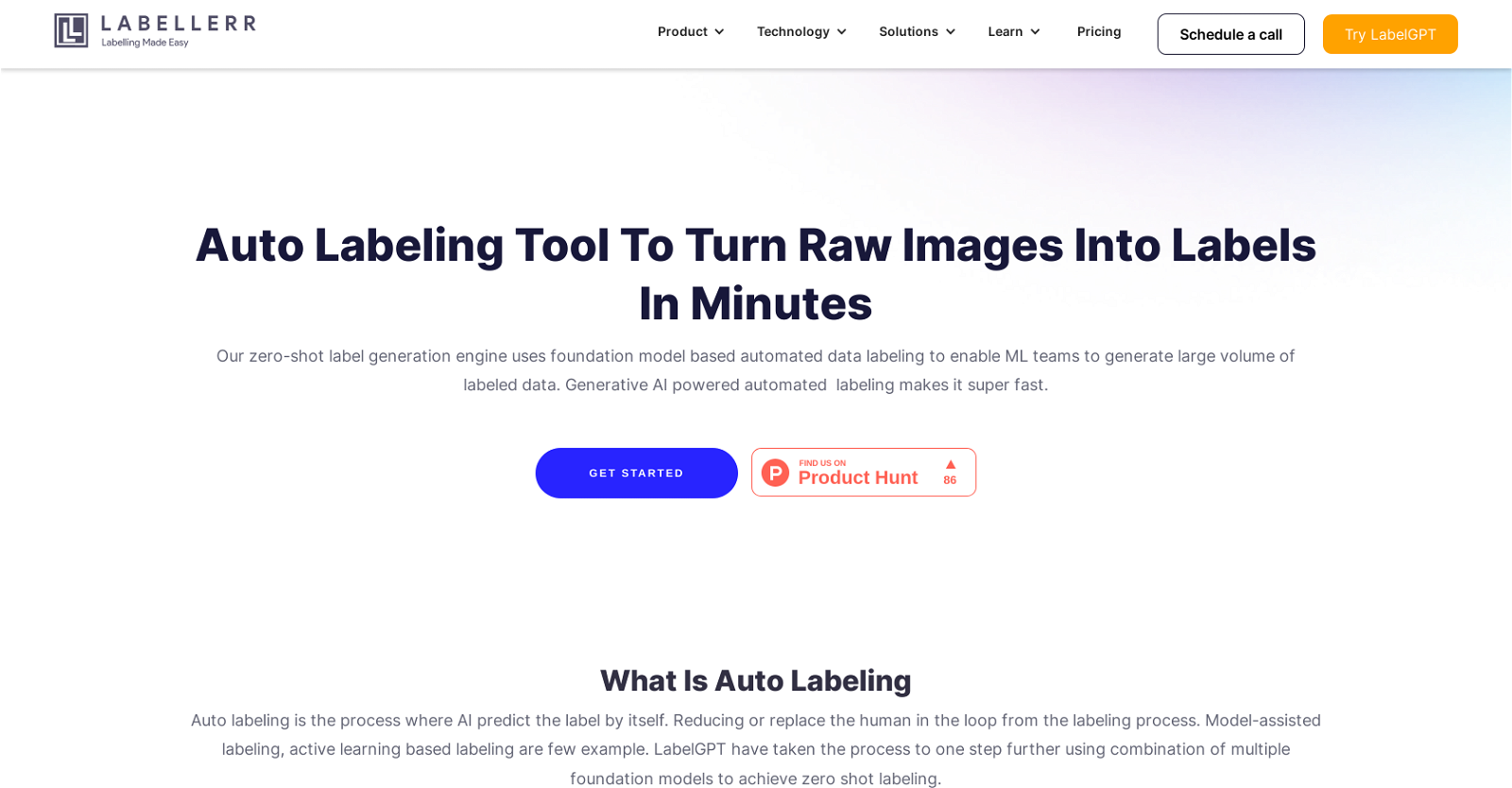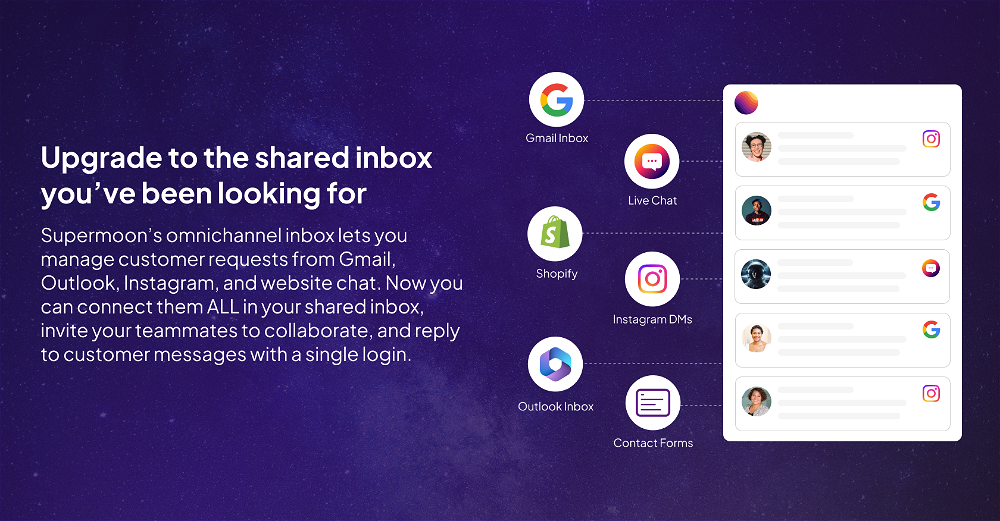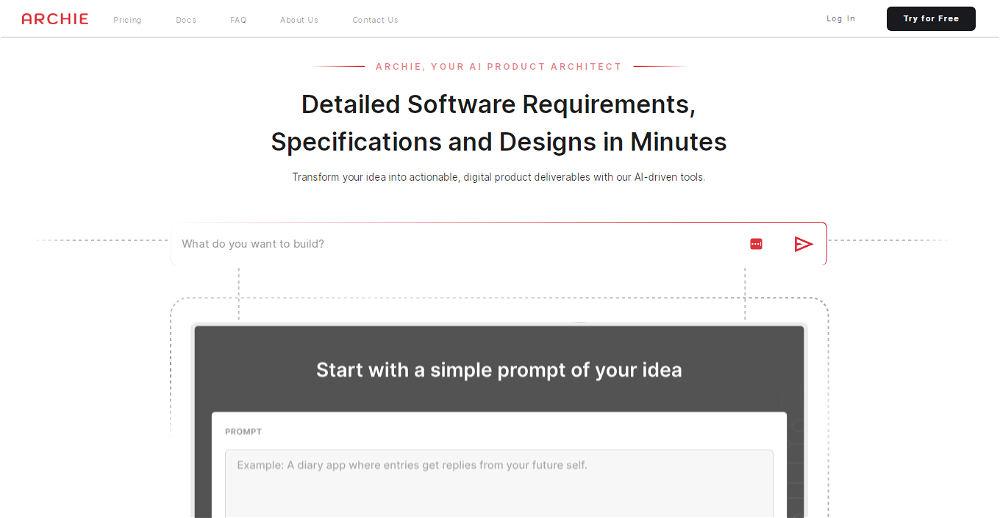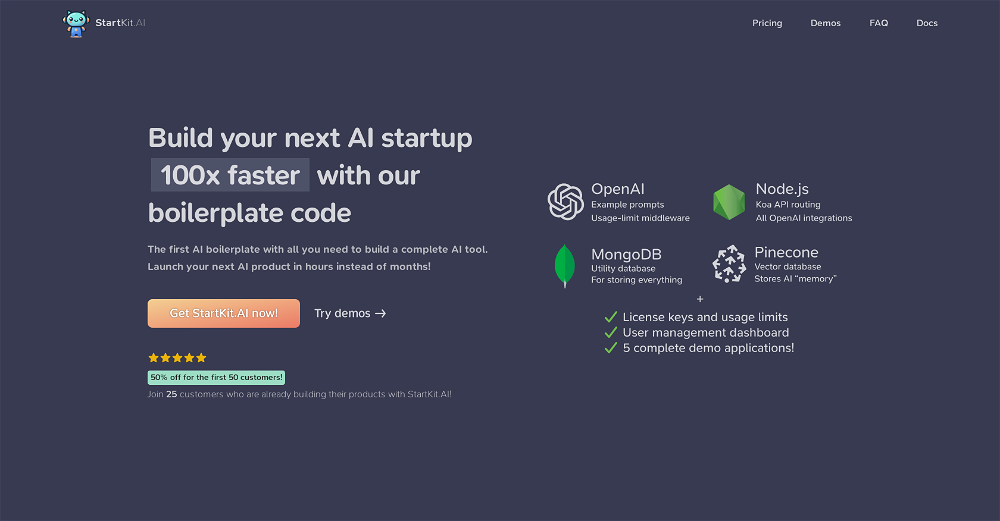What is LabelGPT?
LabelGPT is an automated image annotation tool powered by a generative AI model. It's primary function is to generate labels on raw images, thereby aiding the annotation process.
How does LabelGPT generate labels on raw images?
LabelGPT generates labels on raw images by taking class or object names as a text prompt. It then uses its generative AI model to detect and segment the label on the related image.
How can I import data into LabelGPT?
Data can be imported into LabelGPT from various sources including local platforms or cloud sources like AWS, GCP, Azure, and also through APIs.
What sources does LabelGPT support for importing data?
LabelGPT supports a wide array of data import sources, including local platforms (like an on-premises server or personal device), and various cloud platforms such as AWS, GCP, Azure. It also supports data importation through APIs.
What is the purpose of the zero-shot label generation engine in LabelGPT?
The zero-shot label generation engine in LabelGPT is responsible for creating automatic labels on images. Its purpose is to maximize efficiency and speed up the label generation process, reducing the need for manual labels and allowing Machine Learning teams to generate large volumes of labeled data.
How does LabelGPT contribute to the Machine Learning pipeline?
LabelGPT directly integrates into a Machine Learning pipeline by allowing users to export the produced labels directly into their ML models. Such contributions aid in the training of these models, accelerating the development process.
What is the process of reviewing labels in LabelGPT?
The process of reviewing labels in LabelGPT involves checking the labeled images that the tool generates. Users can validate the quality of these labels by filtering based on a high-confidence score and visually verifying the results.
How can I validate the quality of labels in LabelGPT?
In LabelGPT, the quality of labels can be validated by filtering the labels based on confidence scores. Users can then visually verify the results. This allows for review and assurance of accuracy and quality of generated labels.
How does LabelGPT support the detection and segmentation of labels?
LabelGPT supports detection and segmentation of labels using generative AI models. By using class or object names as a text prompt, LabelGPT's AI model detects the corresponding objects in the image and segments them to create the labels.
How does LabelGPT help increase the speed of the labeling process?
LabelGPT helps increase the speed of the labeling process by automating labeling with its zero-shot labeling engine. In other words, it generates labels instantly without needing annotated examples.
What kind of data can LabelGPT label?
LabelGPT can label raw images. It works by taking class or object names as a text input and generates their corresponding labels on the images.
How does LabelGPT reduce annotation costs?
LabelGPT reduces annotation costs by automating the data labeling process, thus reducing the need for manual intervention. This cuts down on costs associated with human resources and time.
How can annotations from LabelGPT be utilized?
The annotations obtained from LabelGPT can be utilized across numerous areas. Notably, these include propelling vision model training, reducing annotation costs, and increasing the speed of the labeling process.
Can I use the LabelGPT for vision model training?
Yes, the annotations generated by LabelGPT can be utilized to supercharge vision model training - they can be directly integrated into the ML pipeline to enhance the training of vision models.
Does LabelGPT support cloud integration?
Yes, LabelGPT supports cloud integration. It can connect to different cloud platforms, which include AWS, GCP, Azure, and allows data importation through APIs.
How does Auto Labeling work in LabelGPT?
Auto labeling in LabelGPT works through the process where the AI predicts the label by itself. After receiving a text prompt, it identifies and recognizes the class or object in the images and generates appropriate labels.
What is the benefit of using LabelGPT's foundation model?
The benefit of using LabelGPT's foundation model is the ability to generate large volumes of labeled data through its zero-shot label generation engine, thereby speeding up data processing and improving accuracy of model training.
How can I directly integrate LabelGPT into my ML pipeline?
LabelGPT can be directly integrated into your ML pipeline by exporting the generated labels in the form of output data which can be used to train your models.
What is the swift review process offered by LabelGPT?
The swift review process offered by LabelGPT consists of validation tools that allow users to filter labels based on high confidence scores and visually verify the output. This ensures a quick and precise quality control process.
Can LabelGPT label a million images in minutes?
Yes, LabelGPT has the capability to auto-label a million images in minutes, greatly speeding up the labeling process and making it one of the fastest auto annotation tools in the world.













